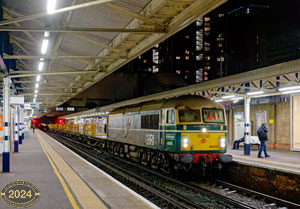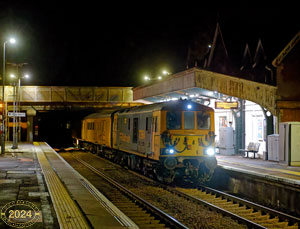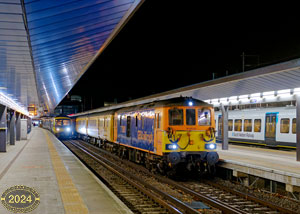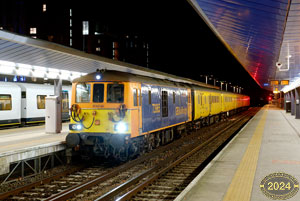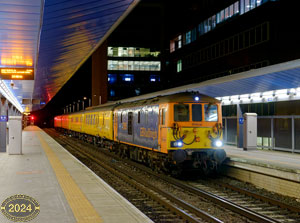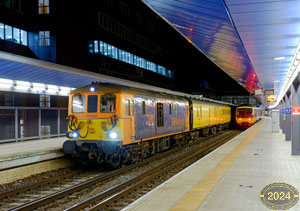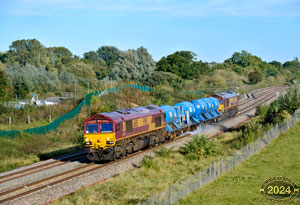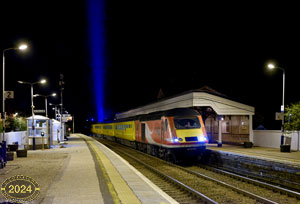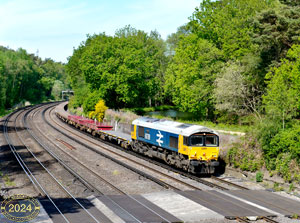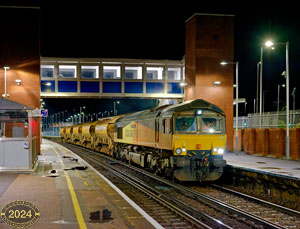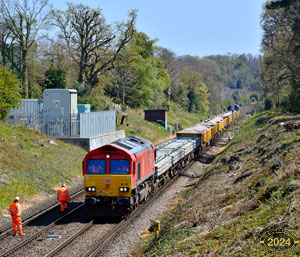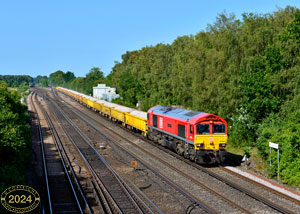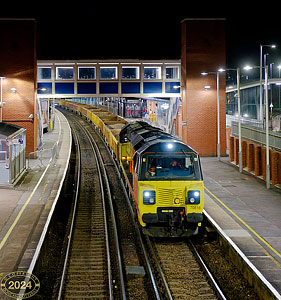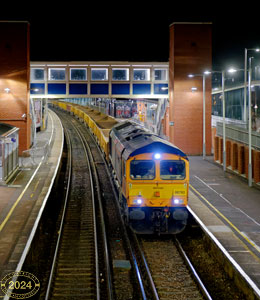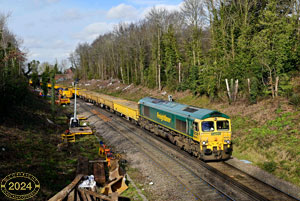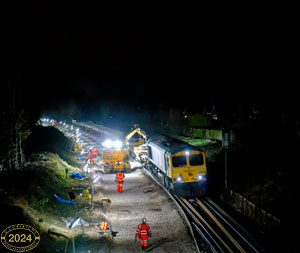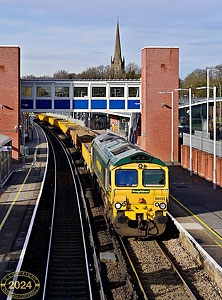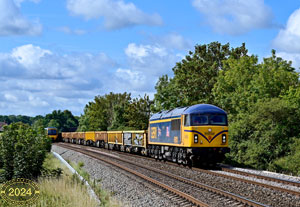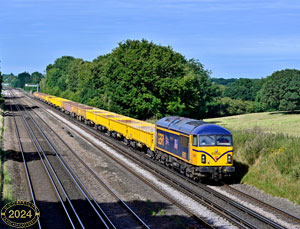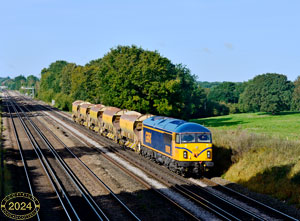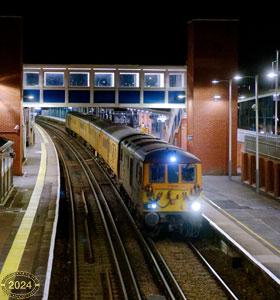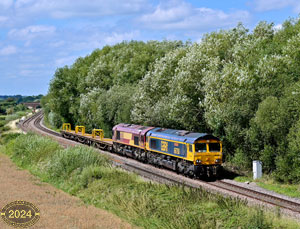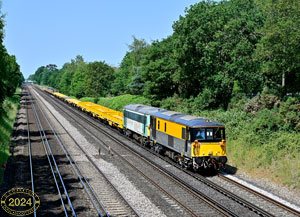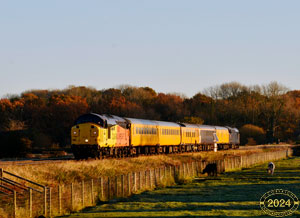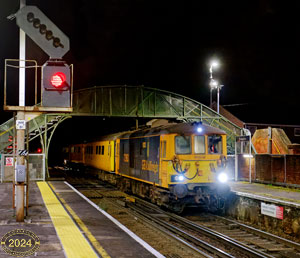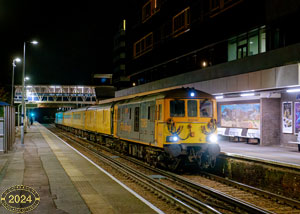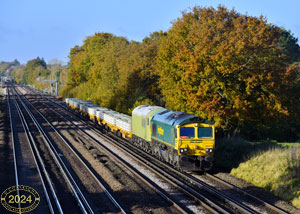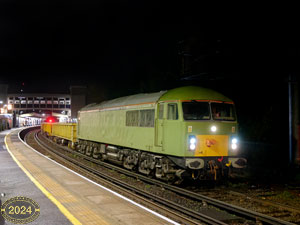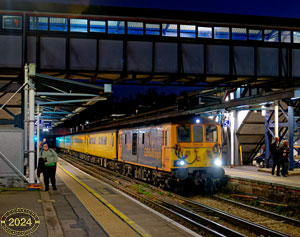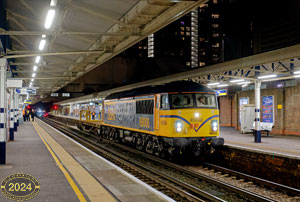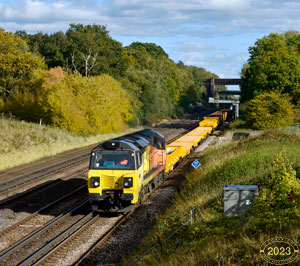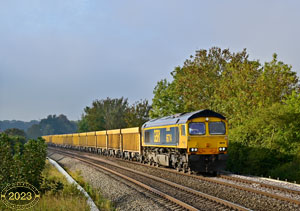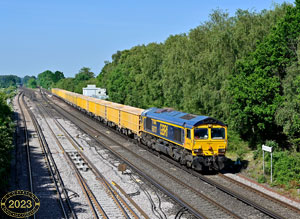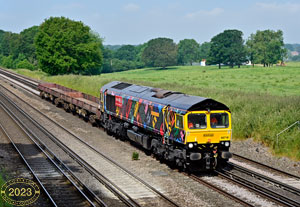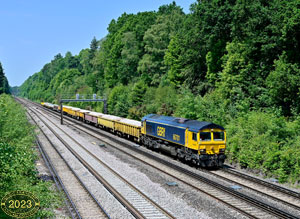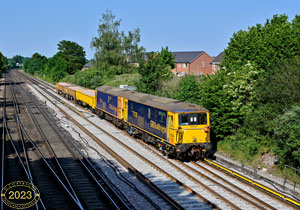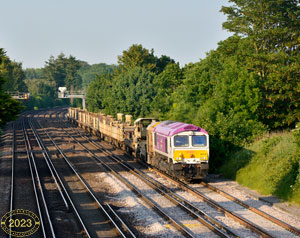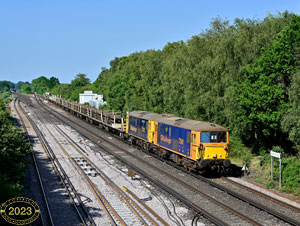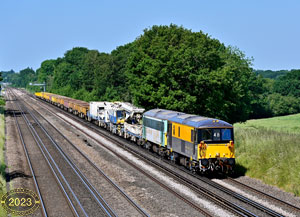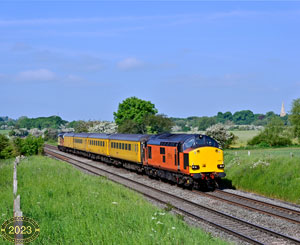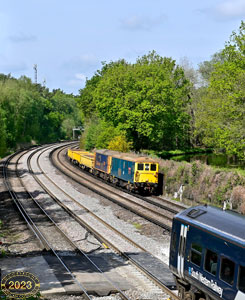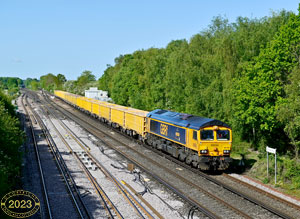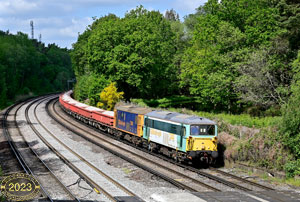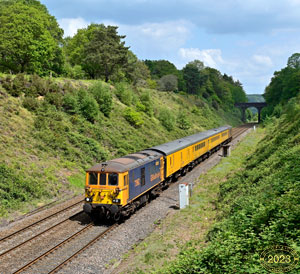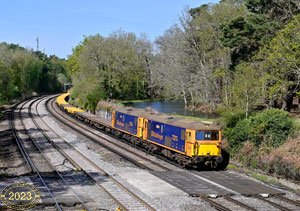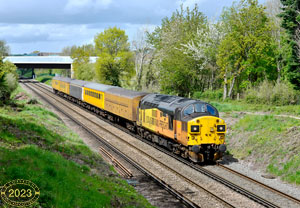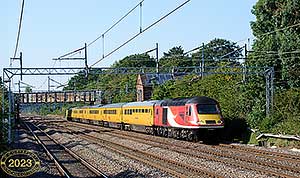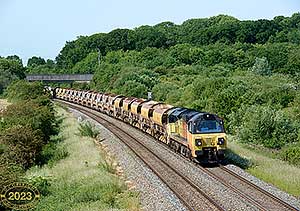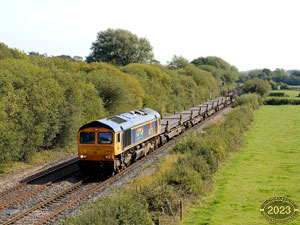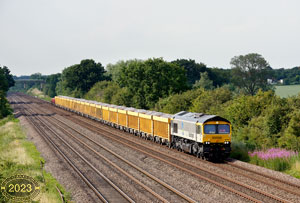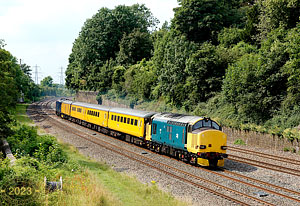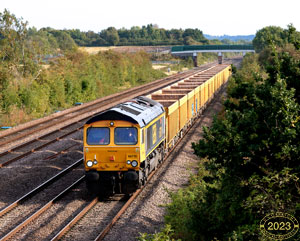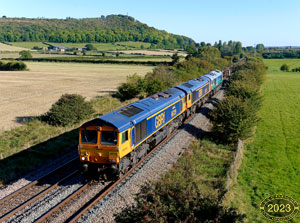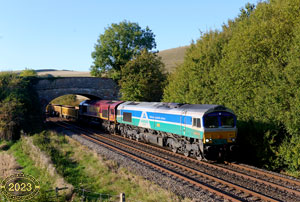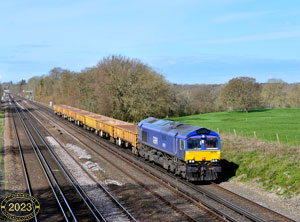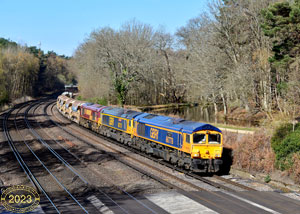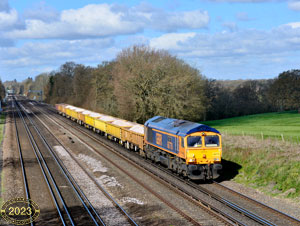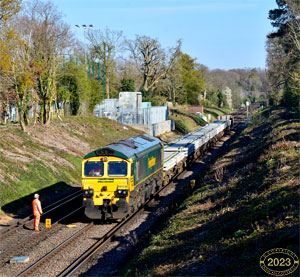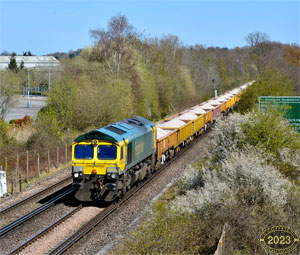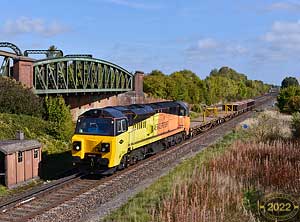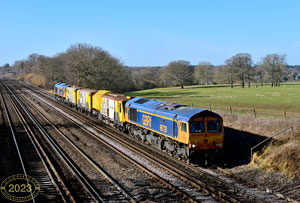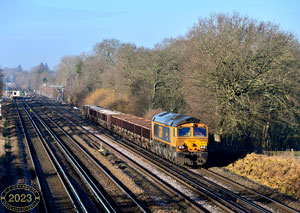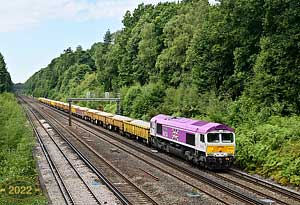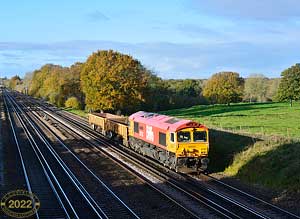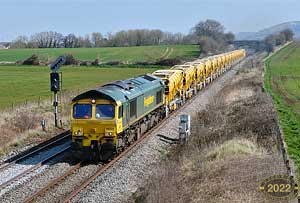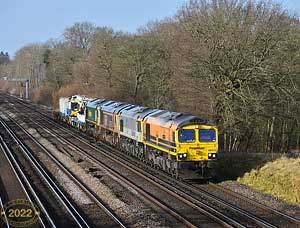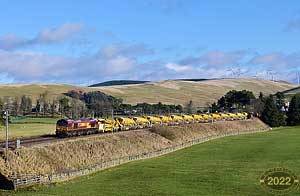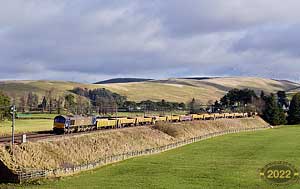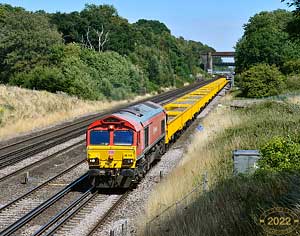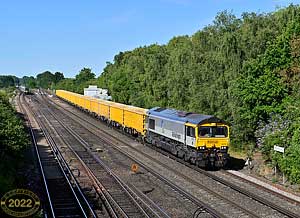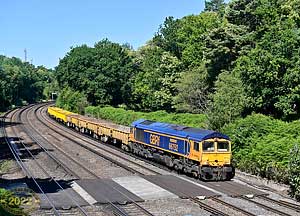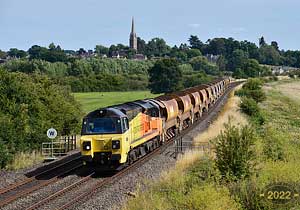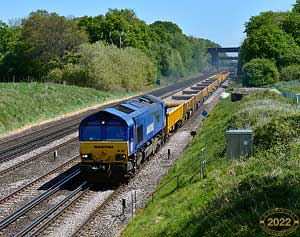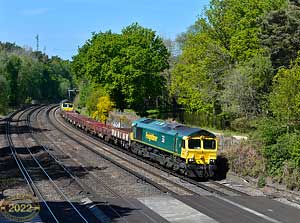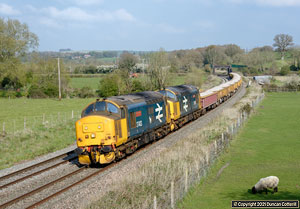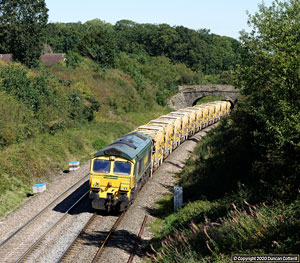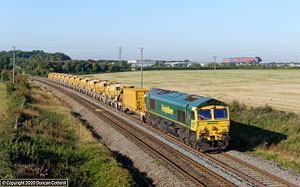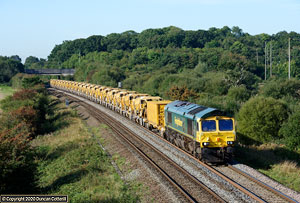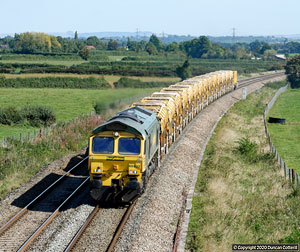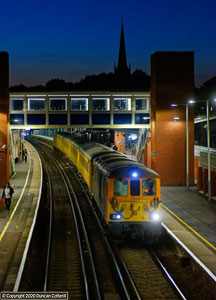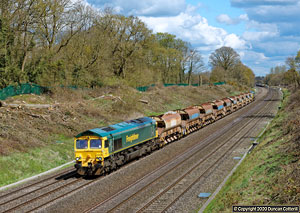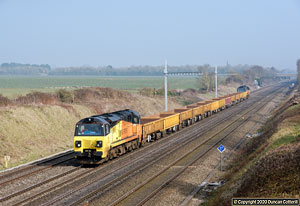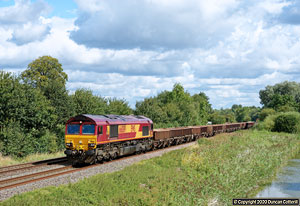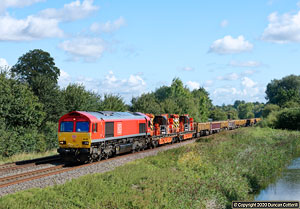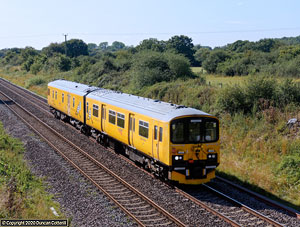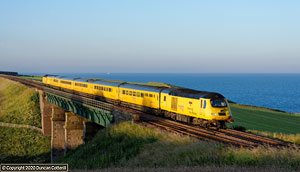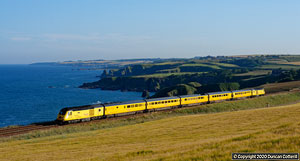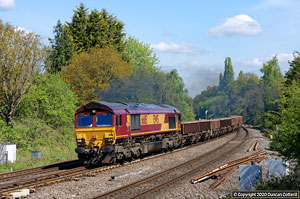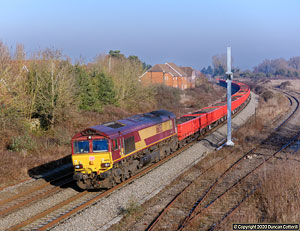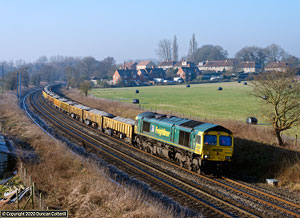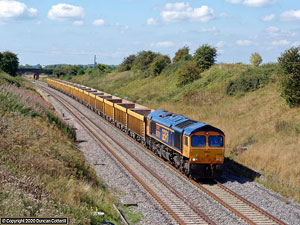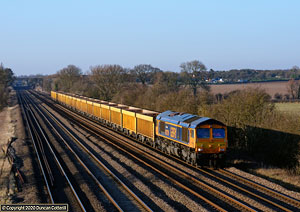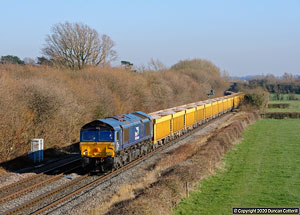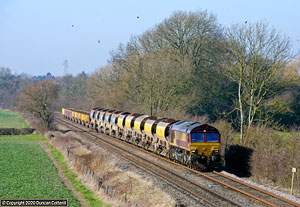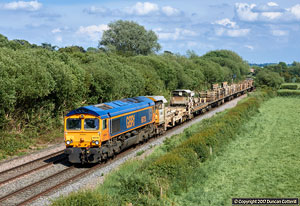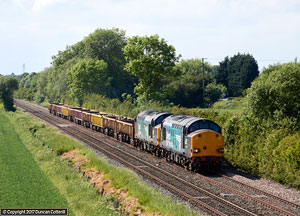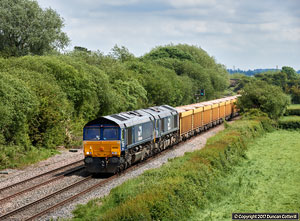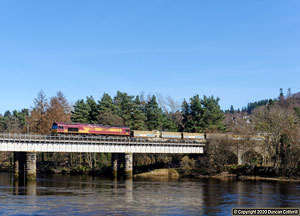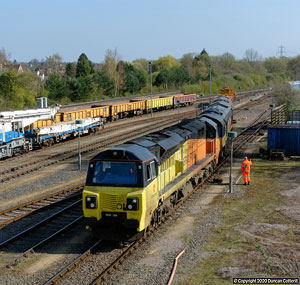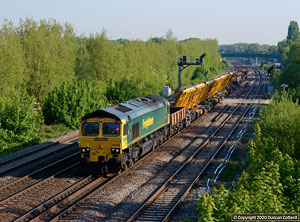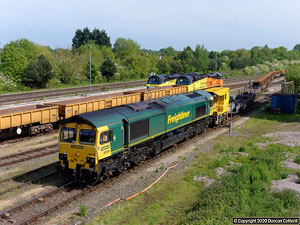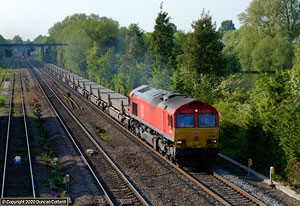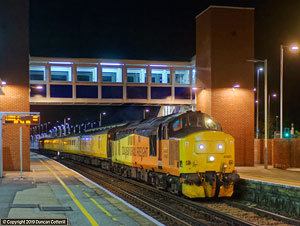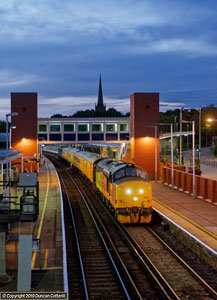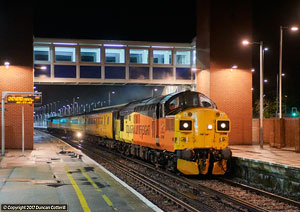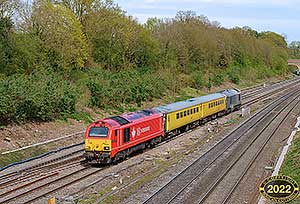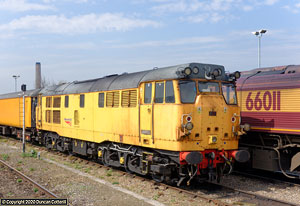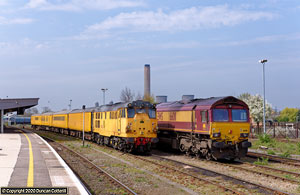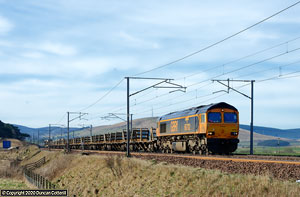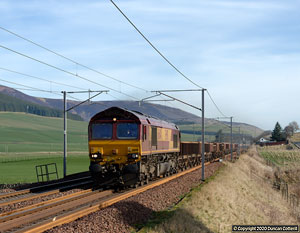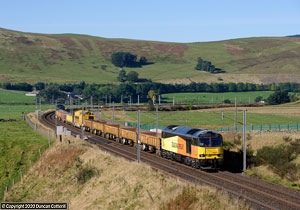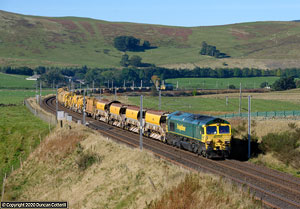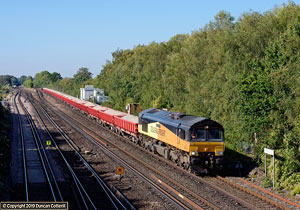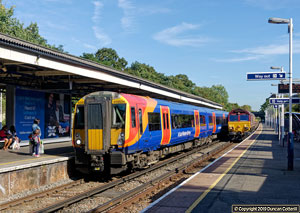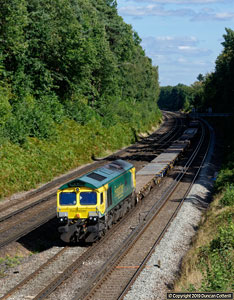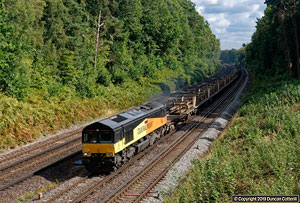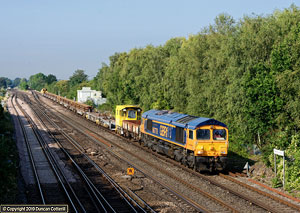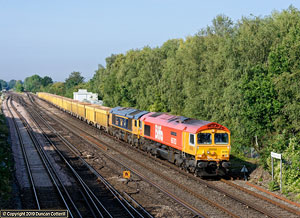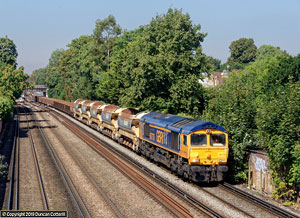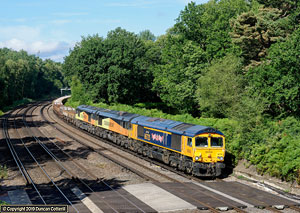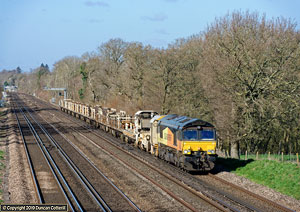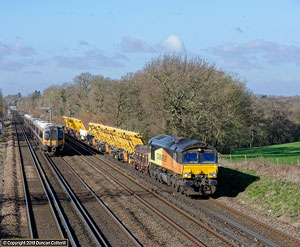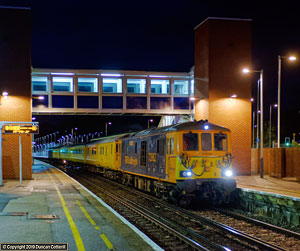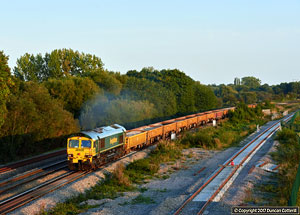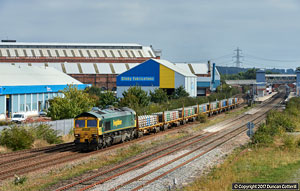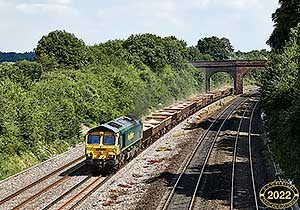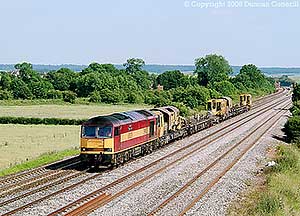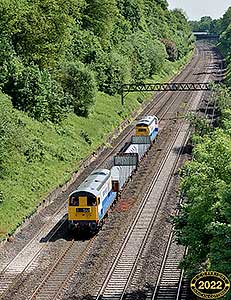Network Rail owns and operates the rail network (the infrastructure as opposed to the trains) and was formed in 2002 after the collapse of Railtrack. It owns a wide variety of rolling stock used to test and maintain the infrastructure, including a few locomotives, but freight operators provide the power for most trains.
Most of Network Rail's trains are operated by freight operators using their own locomotives and can be divided into a number of different categories.
Test trains are used to identify problems with the track or overhead wires before they become serious. Numerous techniques are used to detect misalignments and incipient faults, such as cracking, including ultrasonic testing, imaging and various motion detection methods, all carried out while the train is on the move at normal line speed. There are a number of test trains based at Derby and operated on NR's behalf by Colas using Class 37 and 73 locomotives and Class 43 HST power cars. There's also a specially equipped Class 150 DMU. Most lines are visited every 4 weeks and sometimes more frequently.
The departmental train network links NR's infrastructure maintenance bases, usually on a timetabled basis, allowing the transfer of equipment and materials in preparation for upcoming work. Other trains bring in new rails, sleepers and ballast and take away spoil and spent ballast for disposal. Departmental trains are operated under longer term contract by the freight operating companies, usually using their own locomotives.
Engineers trains operate in conjunction with a particular project, taking materials and equipment to the worksite or bringing it back to base afterwards. These are often one-off workings in conjuction with an overnight or weekend occupation but may operate daily for weeks or months in the case of major projects. Again the freight operators usually provide the motive power.
Railhead Treatment Trains (RHTTs) operate in autumn to ensure that the railhead is sufficiently clean to allow trains to brake effectively. Crushed fallen leaves can build up on top of the rails and form a very slippery layer that prevents wheels gripping the railhead while braking and can interfere with track circuits, a vital part of the signalling system that detects the position of trains. In winter de-icing trains prevent the build up of ice on conductor rails on third-rail electrified lines. Many of these trains are operated by self-propelled MPVs (Multi-Purpose Vehicles) but a number of RHTTs are hauled by freight operators' locos.
On Track Plant, often referred to as track machines are specialised, usually self propelled, vehicles designed to carry out particular jobs, such as tamping or rail grinding.
Test trains are used to identify problems with the track or overhead wires before they become serious. Numerous techniques are used to detect misalignments and incipient faults, such as cracking, including ultrasonic testing, imaging and various motion detection methods, all carried out while the train is on the move at normal line speed. There are a number of test trains based at Derby and operated on NR's behalf by Colas using Class 37 and 73 locomotives and Class 43 HST power cars. There's also a specially equipped Class 150 DMU. Most lines are visited every 4 weeks and sometimes more frequently.
The departmental train network links NR's infrastructure maintenance bases, usually on a timetabled basis, allowing the transfer of equipment and materials in preparation for upcoming work. Other trains bring in new rails, sleepers and ballast and take away spoil and spent ballast for disposal. Departmental trains are operated under longer term contract by the freight operating companies, usually using their own locomotives.
Engineers trains operate in conjunction with a particular project, taking materials and equipment to the worksite or bringing it back to base afterwards. These are often one-off workings in conjuction with an overnight or weekend occupation but may operate daily for weeks or months in the case of major projects. Again the freight operators usually provide the motive power.
Railhead Treatment Trains (RHTTs) operate in autumn to ensure that the railhead is sufficiently clean to allow trains to brake effectively. Crushed fallen leaves can build up on top of the rails and form a very slippery layer that prevents wheels gripping the railhead while braking and can interfere with track circuits, a vital part of the signalling system that detects the position of trains. In winter de-icing trains prevent the build up of ice on conductor rails on third-rail electrified lines. Many of these trains are operated by self-propelled MPVs (Multi-Purpose Vehicles) but a number of RHTTs are hauled by freight operators' locos.
On Track Plant, often referred to as track machines are specialised, usually self propelled, vehicles designed to carry out particular jobs, such as tamping or rail grinding.




 options
options hide options panel
hide options panel